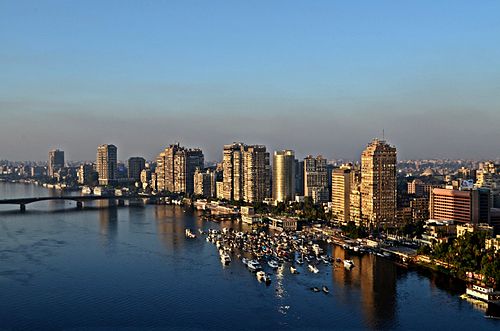Facts for Kids
Giza is a renowned city in Egypt, famous for its ancient monuments including the Pyramids and the Sphinx, highlighting the incredible achievements of ancient Egyptian civilization.
Overview
History Of Giza
The Sphinx Of Giza
Conservation Efforts
Cultural Significance
The Great Pyramid Of Giza
Tourism And Accessibility
Archaeological Discoveries
Modern Impact And Representation

Inside this Article
Great Sphinx Of Giza
Valley Of The Kings
Giza Governorate
Climate Change
Nile River
Limestone
Afterlife
Culture
Plateau
Did you know?
🏜️ Giza is home to the iconic Pyramids, one of the Seven Wonders of the Ancient World.
👑 The Great Sphinx of Giza is the largest monolithic statue in the world.
🌍 Giza is located on the west bank of the Nile River, just outside of Cairo.
📅 The Pyramids of Giza were constructed over 4,500 years ago during the Fourth Dynasty.
🔍 The Pyramid of Khufu, also known as the Great Pyramid, is the largest of the three main pyramids.
🧱 It is estimated that over 2 million stone blocks were used in the construction of the Great Pyramid.
🚶 Giza attracts millions of tourists each year, making it one of the most visited archaeological sites.
📐 The Great Pyramid was originally 146.6 meters tall, making it the tallest man-made structure for over 3,800 years.
🔥 The ancient Egyptians believed the Pyramids were gateways to the afterlife.
🏺 Giza has a rich cultural history, showcasing significant advancements in architecture and engineering.
Introduction
History Of Giza
️ Around 5000 BCE, it was a small settlement near the Nile River. But in the 3rd millennium BCE, it grew into an important city and became the site for huge pyramid construction! The Great Pyramid of Giza was built for Pharaoh Khufu and took about 20 years to finish. Other pyramids, like those of Khafre and Menkaure, also stand tall. The Sphinx, a giant statue with a lion's body and a human head, was built around the same time to protect the pyramids. Giza is a treasure trove of ancient Egyptian history! 🎉
The Sphinx Of Giza
This enormous statue has the body of a lion and the face of a human, believed to be that of Pharaoh Khafre. The Sphinx is about 240 feet long and 66 feet high, making it one of the largest statues in the world! It was carved from limestone about 4,500 years ago. The Sphinx has faced many challenges, such as wind and sand erosion. Despite this, it stands proudly and guards the Giza Plateau, watching over the pyramids for centuries! Isn't that cool? 🏜
️
Conservation Efforts
️ Organizations like UNESCO help preserve these ancient sites. They monitor the structures to prevent erosion and damage from the environment. In recent years, projects have been set up to strengthen the foundations of the Sphinx and clean its surfaces. Scientists are also studying climate change to understand how it affects the area. By taking care of these historical wonders, we ensure that future generations can enjoy and learn from Giza's amazing history! 🌱
Cultural Significance
The Great Pyramid Of Giza
This pyramid was part of a grand complex of temples and smaller pyramids. It took thousands of workers many years to construct it. The Great Pyramid was the tallest building in the world for over 3,800 years! Even today, it's one of the Seven Wonders of the Ancient World and is a true marvel of engineering!
Tourism And Accessibility
Visitors come from all around the world to see the Great Pyramid, the Sphinx, and other ancient sites. To reach Giza, many tourists fly into Cairo and take a short drive or ride on a bus to the Giza Plateau. There are many guided tours available, so families can learn more about the fascinating history. The area also has shops and restaurants, making it easy for visitors to enjoy their stay. With all its wonders, Giza is a must-see destination for curious explorers! 🌍
Archaeological Discoveries
️♂️ In the 19th century, they found hundreds of artifacts like golden jewelry, pottery, and tools inside the pyramids. One of the most famous discoveries was the tomb of Tutankhamun, who was a young pharaoh. Although his tomb is in the Valley of the Kings, many believe he was trained in Giza. Fascinatingly, new discoveries are still being made! In 2020, researchers found a cache of wooden coffins buried for over 2,500 years right near Giza! Every find helps us learn more about ancient Egyptian life and customs! 🎊
Modern Impact And Representation
Many movies, books, and even video games highlight its wonders, making it famous in popular culture. The Great Pyramid and the Sphinx serve as symbols of human ingenuity and strength, showing us what ancient civilizations can achieve. Schools teach students about Giza to spark their curiosity about history and archaeology. The city reminds us that learning from the past can help us build a better future! Giza’s impact, both past and present, is something every young explorer should know about! 🚀

